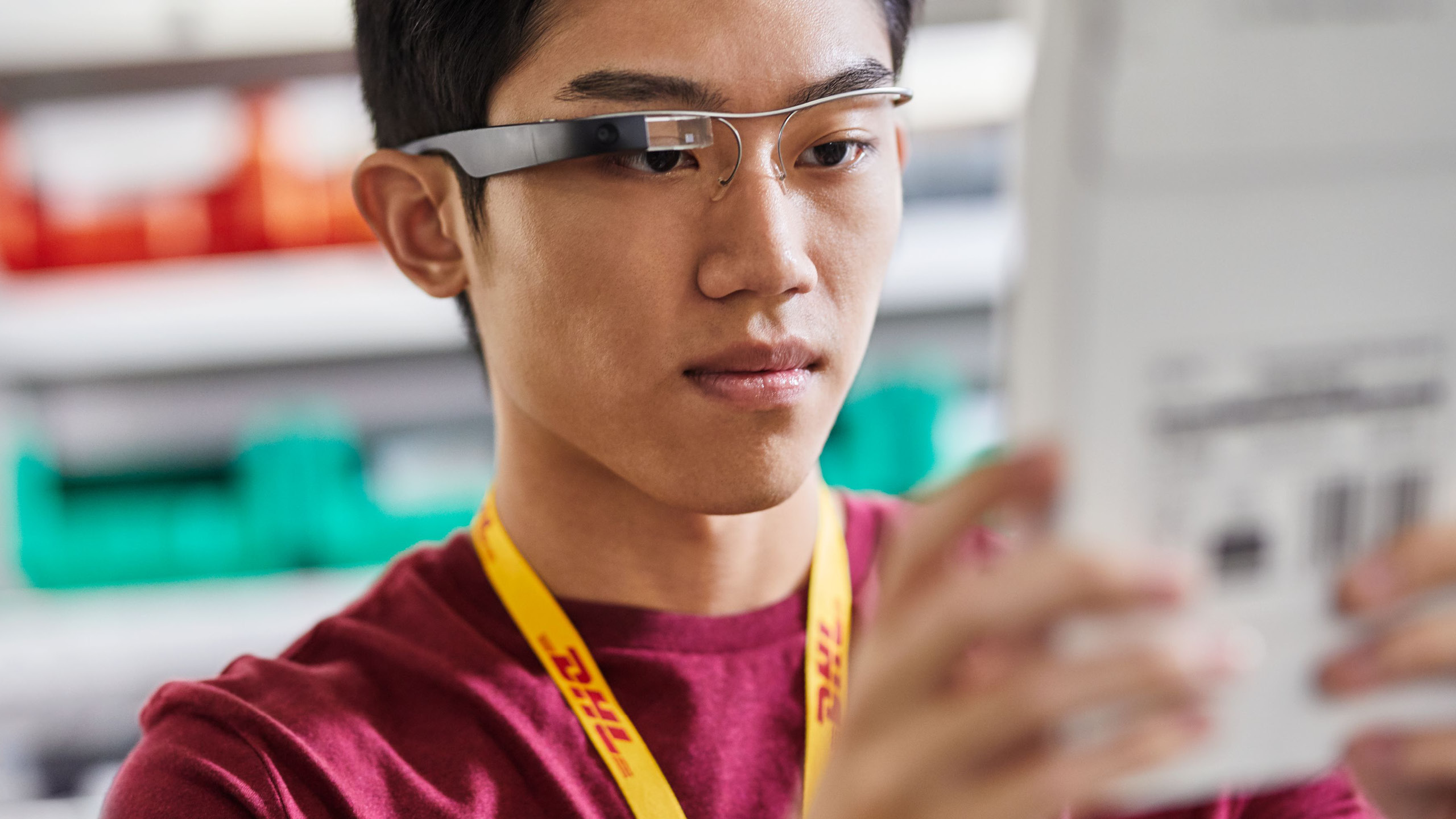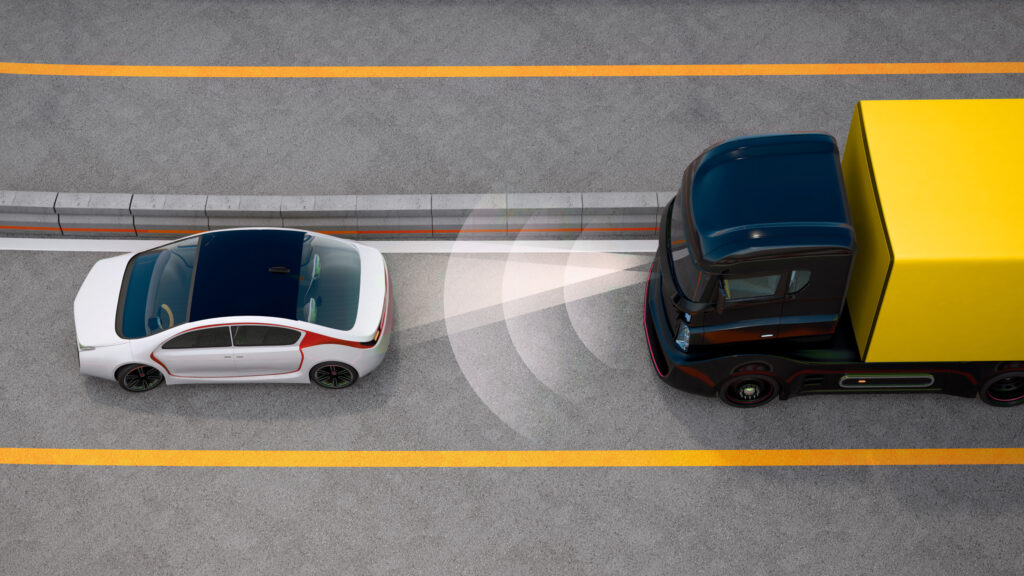
The new DHL trend report “AI-Driven Computer Vision” presents computer vision – i.e. the visual application of artificial intelligence (AI) – as a pioneering technology. According to the DHL experts, computer vision will soon become an efficient standard application in logistics, but they also see many other areas of use. Find out more about the potential of computer vision here.
What is Computer Vision?
Simply put, computer vision extends artificial intelligence (AI) to include visual sensory perception – AI learns to see. In computer vision, cameras, data, and algorithms substitute the processes in the human eye and the interaction between eyes and brain. And just as with other AI applications, machines learn from the data and continuously improve their capabilities.
Definition of Computer Vision
Computer vision is the ability of digital systems to extract information from images or videos and derive actions or recommendations from them. It is a subsection of AI.
How Computer Vision improves itself
Computer vision systems work either with deep learning, in which self-learning algorithms and artificial neural networks extract usable information from visual data until they can identify and compare images as well as distinguish between objects.
Or computer vision may be based on so-called convolutional neural networks (CNNs). CNNs perform significantly better than other neural networks when it comes to visual input. A CNN has numerous layers and breaks down images into markers to carry out mathematical calculations with them. These calculations can be used to continuously improve the predictive accuracy.
We think there has never been a more exciting time for industries and logisticians to work together to leverage the full potential of computer vision and AI for the benefit of organizations, our colleagues in operations, and for improvements in environmental sustainability.
Dr. Klaus Dohrmann, Vice President, Head of Innovation and Trend Research DHL Customer Solutions and Innovation
Computer Vision in the Present and Future
Thanks to advances in the perception, reconstruction, and interpretation of images, computer vision offers more and more possible uses. It has long since evolved from a theoretical gimmick into a practical application: Numerous AI applications – from facial recognition to autonomous vehicles – are already using computer vision.
As the options expand, so does the interest of numerous companies and industries in computer vision. With its capability to increase efficiency, save time, improve sustainability, and thus boost profitability, computer vision is a true growth market.
Potential for the Use of Computer Vision
Autonomous driving, teleoperation, drones, robotics, mixed reality: the potential of computer vision in these fields is obvious and already being exploited to some extent.
Other technical applications include:
- Interactive AI: Systems can learn to better understand human counterparts and their facial expressions by means of computer vision.
- Digitale twins: The integration of computer vision into a digital twin allows the telemonitoring of physical objects. The computer detects errors or deviations and initiates corrective action.
With advancements in artificial intelligence (AI), computer vision is at a stage to become an industry-shaping technology and has exceptional promise along the supply chain – for our customers, employees, partners, and certainly the environment. We at DHL are maintaining our commitment to shaping the Era of Logistics by bringing real-world innovations to the logistics ecosystem, leveraging AI and computer vision technology.
Katja Busch, CCO DHL & Head of DHL Customer Solutions and Innovation
Computer Vision in Logistics
In the logistics industry, computer vision has already proven its worth in specific areas. Nevertheless, there are still many tasks in warehouses, distribution centers, hubs, or in the supply chain that could and should be successively assigned to AI systems or supported by them. Current and future logistics applications of computer vision include:

- Occupational safety: Computer vision increases safety in the workplace. It identifies potential threats in warehouses, depots, and other logistics facilities, reduces risks and prevents accidents. It can also check whether employees are wearing the prescribed protective equipment and complying with safety regulations.
- Health protection: In addition to occupational safety, computer vision recognizes incorrect posture, improper movements, or signs of fatigue and can alert the person concerned.
- HR planning and operations: Computer vision analyzes heat maps of work processes in a facility. Thus, it is possible to optimize routes taken by employees. In addition, staff shortages or inefficient processes can be identified early by capturing personnel and requirements. Computer vision also identifies unauthorized persons on the premises and can thus support security.
- Facility- and device management: Computer vision technology can be used to monitor logistical facilities, buildings, and sites continuously and accurately, alerting maintenance teams so they can intervene quickly to fix or ideally prevent problems. In terms of capacity planning for optimal plant utilization, computer vision provides insights faster than the human eye and human experience. The stocks of essential work materials such as pallets or transport containers are constantly being monitored to prevent processes from being delayed by stock shortages. Fleet management can also be simplified by computer vision.
- Shipment management: Load building, optimal use of space, quality control in outbound logistics, commissioning, dimensioning of transport containers, sorting, identification of labels, barcode scanning, etc. – computer vision can automate, simplify, and optimize numerous processes in dispatch and shipment control.
As we seek to improve our own logistics capabilities and those of our customers, we constantly look for fresh approaches and valuable new technologies. That’s why we engage with the brightest tech innovators and disruptors around the world. If a technology development or application can contribute to a better customer experience, higher customer satisfaction levels, improved efficiency, and more sustainable operations, we’re interested!
Dr. Klaus Dohrmann, Vice President, Head of Innovation and Trend Research DHL Customer Solutions and Innovation
The wide range of technical applications makes computer vision appealing to a variety of industries. The DHL Trend Report does not just focus on logistics – as always, the DHL experts look beyond their own horizons and identify other promising areas of application for computer vision.
- Retail: e.g., payment processes without human cashiers, inventory management, or category management
- Healthcare: e.g., laboratory technology and biopsy, evaluation of imaging techniques, early detection of diseases, or surgical techniques
- Production industry: e.g., quality control or system monitoring and preventive maintenance
- Disaster control: e.g., early warning through environmental monitoring and damage analysis

AI and Computer Vision – New Technologies Demanding Responsible Use
As DHL Freight and DHL, we not only want to play a pioneering role when it comes to the technological aspects of smart logistics, we also want to live up to our responsibility associated with new technologies.
The visual inspection of facilities with human employees must always comply with the applicable data protection standards to be acceptable to everyone. Sustainable success is only possible if we do this together.
Special attention is also paid to cyber security to minimize the risk of hacking and malicious tampering of data. Data security and data protection are crucial to ensure the acceptance of AI-driven computer vision by partners and customers.
Current and Future Technology with High Potential
Computer vision technology is on the rise and it is fascinating to witness the increasing commercial use of these AI-driven solutions not only in logistics but also in various other industries – and to play an active role as a pioneer in logistics.
DHL Freight and DHL are monitoring developments in AI and computer vision very closely. Together with our partners and customers, we want to promote technological progress and improve logistics processes along the entire supply chain.



